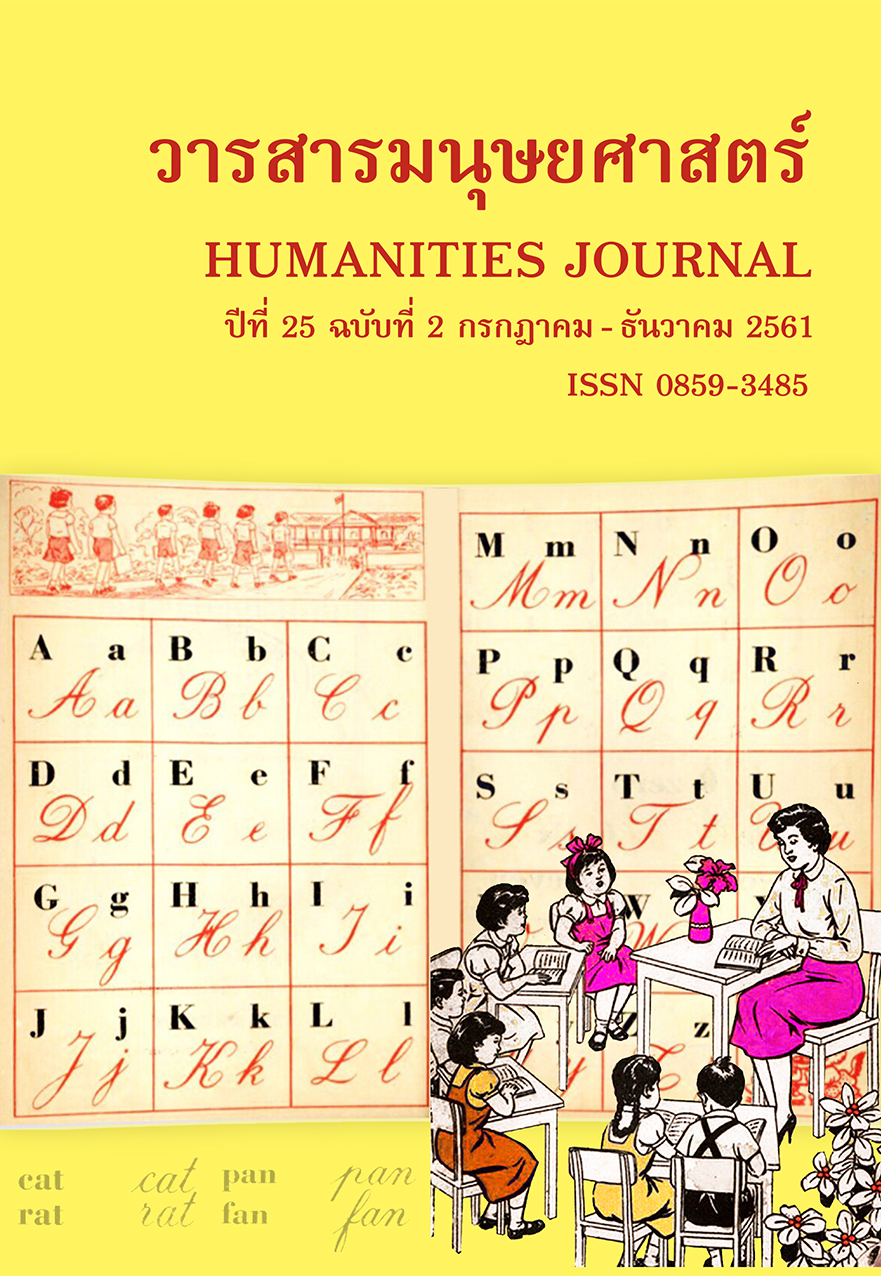เหยื่อการข่มขืน ความรุนแรงและการเปลี่ยนแปลงของตัวละครหญิงใน เดอะ เซอร์เจียน
Main Article Content
Abstract
This article aims to study and analyze violence, especially rape, against the female character in The Surgeon, a contemporary American detective novel written by Tess Gerritsen. The result of the study shows that the writer presents not only the physical violence, but also the psychological trauma suffered by the rape survivor. She depicts the victimization of the female character overcome by her traumatic past produced through weakness, helplessness and terror and at the same time who rebuilds self-esteem and becomes ready to fight against the criminal to protect herself. The selected American detective novel reveals that victimization of violence is the result of gender differences in patriarchy, a social system in which men have more power than women. But the changes of the female character also represent the social change in which women retaliate against patriarchal oppression.
Article Details
References
ชุติมา ประกาศวุฒิสาร. (2549). ความเงียบที่ส่งเสียง: ผู้หญิงกับความรุนแรงทางเพศในวรรณกรรมสตรีร่วมสมัย. กรุงเทพฯ: ภาควิชาวรรณคดีเปรียบเทียบ คณะอักษรศาสตร์ จุฬาลงกรณ์มหาวิทยาลัย.
ชุติมา ประกาศวุฒิสาร. (2554). ก่อร่าง สร้างเรื่อง: เรื่องเล่า อัตลักษณ์ และชุมชน ในวรรณกรรมสตรีชายขอบ. กรุงเทพฯ: คบไฟ.
Block, J. D. & Greenberg, D. (2002). Women & Friendship. LA: Wellness.
Brownmiller, S. (1975). Against Our Will: Men, Women and Rape. New York: Ballantine Books.
Cranny-Francis, A. (2003). Gender Studies: Terms and Debates. Houndmills, Basingstoke, Hampshire: Palgrave Macmillan.
Favor, L. J. (2000). The Foreign and the Female in Arthur Conan Doyle: Beneath the Candy Coating. English Literature in Transition, 1880-1920, 43(4), 398-409.
Foucault, M. (1978). The History of Sexuality, Vol. 1: An Introduction (R. Hurley, Trans.). New York: Pantheon Books.
Gerritsen, T. (2001). The Surgeon. New York: Ballantine Books.
Guinagh, B. (1987). Catharsis and Cognition in Psychotherapy. New York: Springer New York.
Herman, J. L. (2015). Trauma and Recovery. New York: Basic Books.
Janoff-Bulman, R. (1995). Victims of Violence. In G. S. Everly, & J. M. Lating (Eds.), Psycho Traumatology: Key Papers and Core Concepts in Post-Traumatic Stress (pp. 73-82). Boston: Springer.
Jensen, V. & Kouri, M. (2012). Introduction: Women Criminals and the Crimes They Commit. In V. Jensen (Ed.), Women Criminals: an Encyclopedia of People and Issues (pp. 3-23). ABC-CLIO.
Key, M. (1996). Male/ Female Language: With a Comprehensive Bibliography. Metuchen, N.J.: Scarecrow Press.
Messent, P. (2013). The Crime Fiction Handbook. Chichester, West Sussex, UK: Wiley-Blackwell.
Morewitz, S. (2004). Domestic Violence and Maternal and Child Health: New Patterns of Trauma, Treatment, and Criminal Justice Responses. Boston: Springer.
Mulvey, L. (1989). Visual and Other Pleasures. Houndmills, Basingstoke, Hampshire: Macmillan.
Rozee, P. (2002). Sexual Victimization: Harassment and Rape. In M. Biaggio, & M. Hersen (Eds.), Issues in the Psychology of Women (pp. 93-109). Boston: Springer US.
Stringer, R. (2011). From Victim to Vigilante: Gender, Violence, and Revenge in The Brave One (2007) and Hard Candy (2005). In H. Radner, & R. Stringer (Eds.), Feminism at the Movies: Understanding Gender in Contemporary Popular Cinema (pp. 268-280). New York: Routledge.


